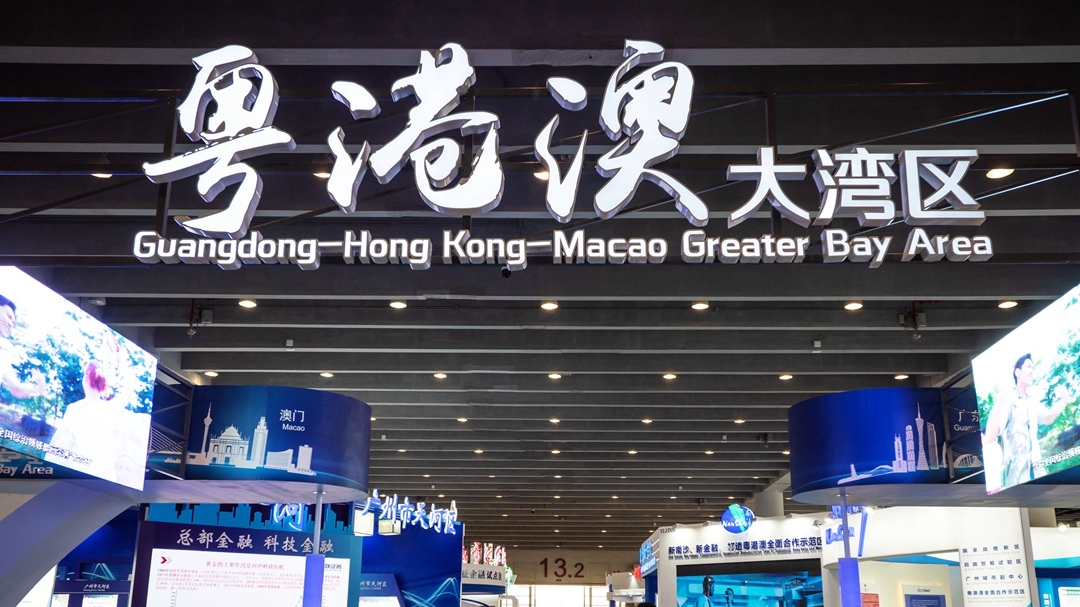
Editor's note: Matteo Giovannini is a finance professional at the Industrial and Commercial Bank of China in Beijing and a member of the China Task Force at the Italian Ministry of Economic Development. The article reflects the author's views, and not necessarily those of CGTN.
China's Hong Kong Special Administrative Region (HKSAR) has for decades represented an example of well-crafted government policies becoming a global financial, trade and aviation hub, and being constantly assigned the top place in the ranking of the world's freest economies.
This status has been recently shaken by the U.S. reaction to the introduction of a national security law in the HKSAR, the rising role of Shenzhen as a model in shaping China's future and the outbreak of the coronavirus pandemic, which have all contributed to increasing the level of pressure on Hong Kong and forced it to rethink its future development strategies in order to stay relevant.
Hong Kong has seen its economy contracting for four consecutive quarters and, since there is no clear sign on when the recession is going to end, it has become necessary for the city to utilize the support measures that the central government can offer in order to stimulate the recovery of its economy.
The Chief Executive of the Hong Kong Special Administrative Region Carry Lam, completed this week a four-day tour to the Chinese mainland, which started with a three-day visit to Beijing and ended with a stop in Guangzhou and Shenzhen. The trip aimed at understanding what role the city can play in the recently-approved 14th Five-Year Plan (2021-2025).
The delegation that traveled to Beijing with Lam provides a good representation of what was on the agenda during discussions with Chinese government officials.
Transportation has been a main topic of discussion considering the dramatic drop in the number of visitors to Hong Kong, which Tripadvisor in 2011 put at the top of the world's most visited cities with nearly 30 million arrivals, but whose local business community suffered because of the free fall in consumption.
Lam's discussions with Chinese government officials and the director of the Civil Aviation Administration of China (CAAC) about a plan to remove the required two-week quarantine period for cross-border travelers were aimed at re-establishing a normal flow of people into Hong Kong and providing an important stimulus for restarting Hong Kong's economy.
Financial integration with China is a process that formally started in 2014 with the launch of the first Stock Connect Program. It has served as a reminder of the central role of Hong Kong as China's largest offshore center to better connect the mainland with the rest of world, as well as a platform for the nation's financial market to open up, providing a springboard for the internationalization of the yuan.
Lam's discussions with Chinese officials may have underlined the commitment for a stronger connectivity of Hong Kong with the Chinese mainland and in particular within the Greater Bay Area and could have included the decision for a launch date of the Wealth Management Connect scheme, originally announced in May.

Stands displayed at the China (Guangzhou) International Finance Expo in Guangzhou, China, June 22, 2019. /VCG
Stands displayed at the China (Guangzhou) International Finance Expo in Guangzhou, China, June 22, 2019. /VCG
Moreover, considering the rapid digitalization of China's yuan and the growing relevance of electronic transactions, Hong Kong is playing an important role in promoting cross-border payments within the Greater Bay Area and in Southeast Asia, driving in this way the push for the yuan's global use.
Strictly connected to financial connectivity is the innovation and technological development where Hong Kong is seen as an extremely important part of the process considering its renowned status as a fintech hub, a rapidly growing industry where the city is complementing Shenzhen and which relies on important pillars such as capital, talent and infrastructure.
In this regard, Lam's meeting with the Chinese minister of science and technology has served to stress the possibility of a further cooperation between Hong Kong and Shenzhen and in the development of the Lok Ma Chau innovation and technology park, which is four times larger than the Hong Kong Science Park and offers a cross-border access to supply chains, manufacturing and talent pool available in Guangdong Province.
The most important meeting took place on the last day of Lam's visit when she met with Vice Premier Han Zheng, who is also the head of the leading group on the construction of the Guangdong-Hong Kong-Macao Greater Bay Area.
It's vital for Hong Kong to continue its path towards a full economic integration with the Chinese mainland in order to quickly recover from the consequences of the pandemic and to create a solid foundation for maintaining the city's level of competitiveness on a global scale while becoming an important player in tech innovation.
A stronger integration within the Greater Bay Area could serve as a possible solution for Hong Kong's chronic problems such as its highly inflated housing market, due to the lack of land and which can be solved through cheaper cross-border homes, and a stagnant employment market, which could be invigorated by the recently-signed Hong Kong-Guangdong 2020 Work Plan that offers a cooperation platform for education and talent.
All in all, Lam's tour to Beijing and to the two major cities in Guangdong Province can be read as a result of converging strategies towards striving to maintain intact the world-renowned prestige of Hong Kong while carrying on with the central government's master plan to make of the city an essential piece of the Greater Bay Area's puzzle.
(If you want to contribute and have specific expertise, please contact us at opinions@cgtn.com.)